Which statement about TLS is accurate when using RESTCONF to write configurations on network devices'?
Which two tasks must you perform when you implement LDP NSF on your network? (Choose two.)
Which type of attack is an application attack?
Refer to the exhibit.

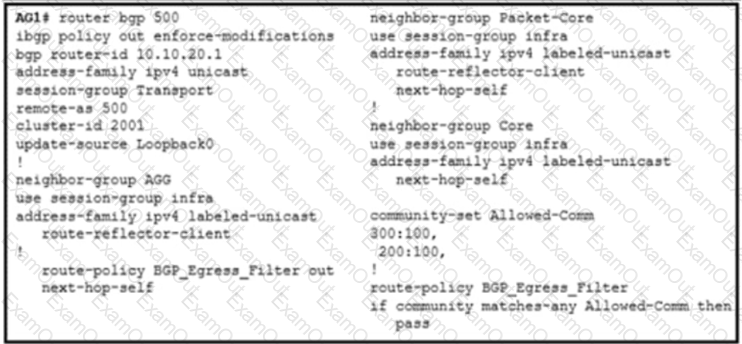
A NOC engineer is configuring label-based forwarding from CSR to the EPC gateway. Cell-site operation and maintenance for IPv4 traffic between 10.20.10.1 and 192.168.10.10 is already up. CR1 and CR2 are configured as route reflectors for AG1 and AG2. Which action completes the configuration?
Refer to the exhibit:

What is significant about the number 2 in the configuration?
Simulation 7
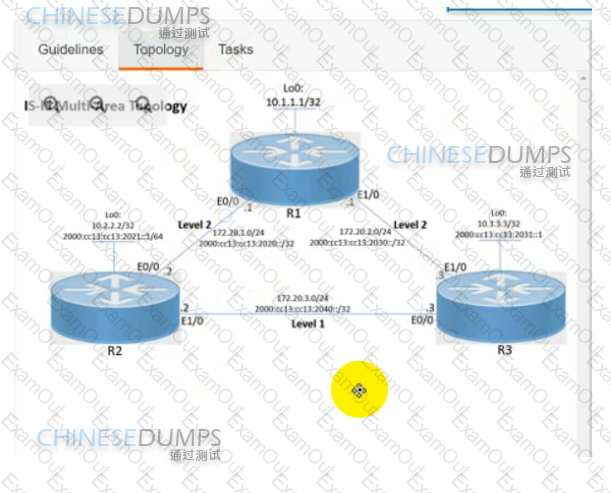
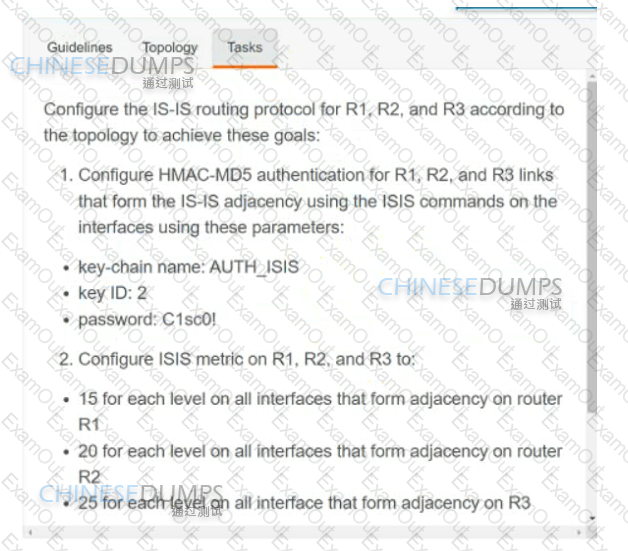
Which two features describe TI-LFA? (Choose two.)
Refer to the exhibit.
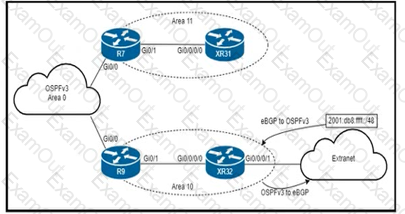
An engineer is updating this network to meet these conditions:
• Area 10 will receive inter-area routes and support mutual redistribution of external routes with the extranet.
• The ::/0 route is prohibited in Area 10.
• Area 11 will receive only the ::/0 route from the ABR.
• External route redistribution is not supported in Area 11.
• The ABR in Area 11 will advertise no interarea routes.
Which two configurations must be performed to meet the requirements? (Choose two.)
Refer to the exhibit.
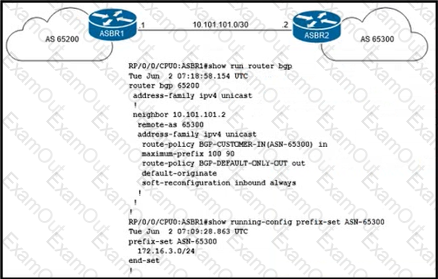
A network engineer is implementing a standard customer route-policy on ASBR1 with these requirements:
• It must accept only customer-assigned prefixes
• It must preserve customer advertised BGP communities
• It must set the local-preference to 110 for all prefixes
• It must attach the ORIGINATION-PE and LOCAL-CITY communities to all accepted prefixes.
Which route policy must the engineer implement on ASBR1 to satisfy the requirements?
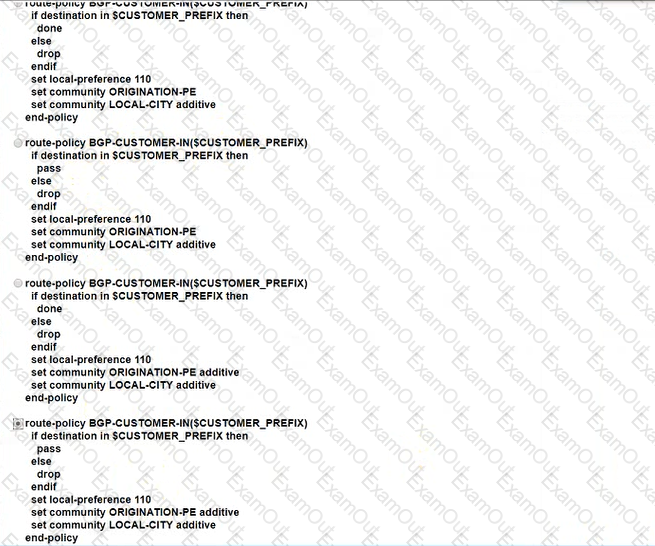
An engineering team must implement Unified MPLS to scale an MPLS network. Devices in the core layer use different IGPs, so the team decided to split the network into different areas. The team plans to keep the MPLS services as they are and introduce greater scalability. Which additional action must the engineers take to implement the Unified MPLS?

